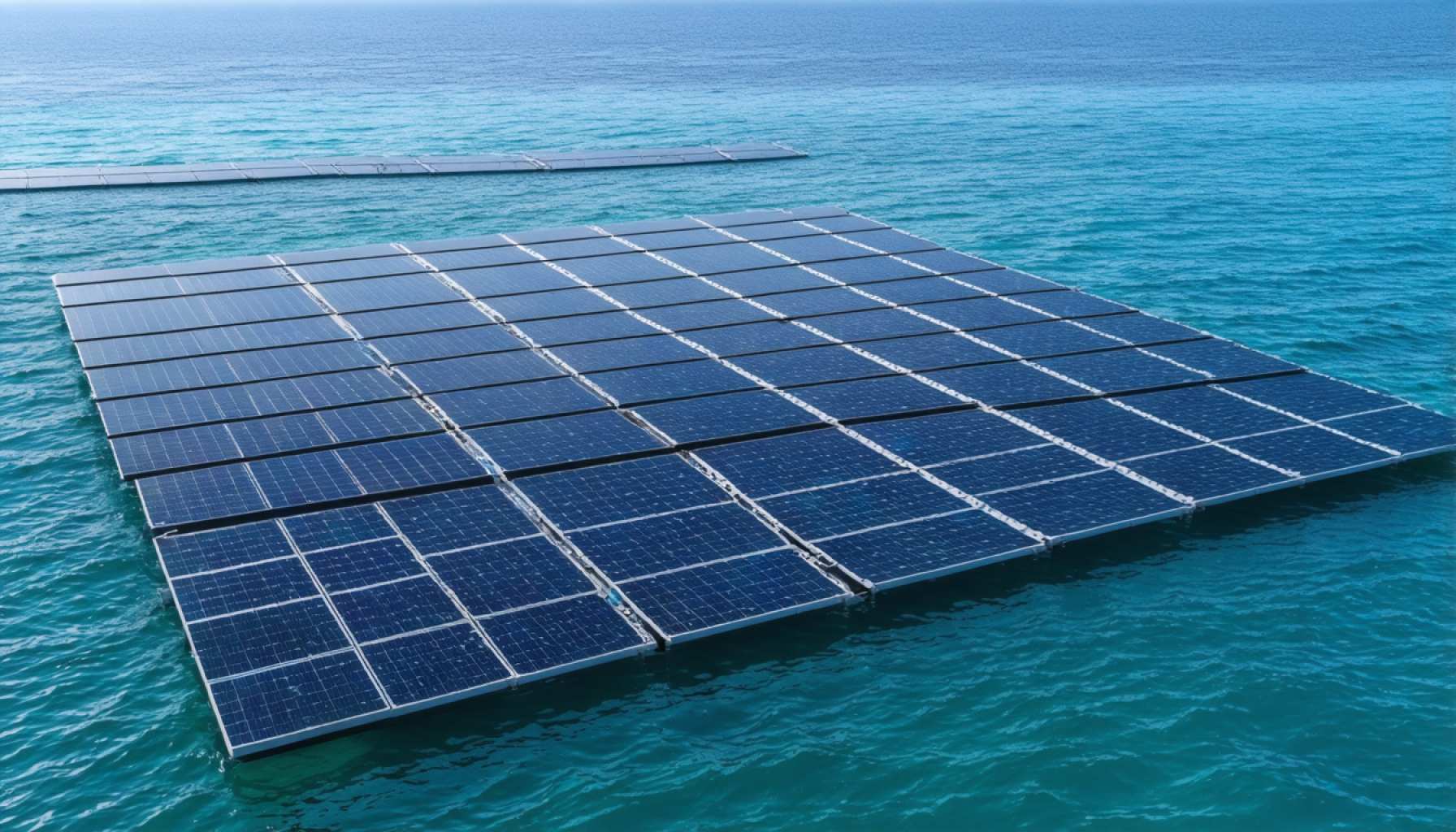- Floating solar farms are a groundbreaking clean energy solution, utilizing unused water bodies and enhancing efficiency with water cooling.
- Countries like Japan, the Netherlands, and China are increasingly adopting floating solar due to limited land and high energy demands.
- These installations reduce land-use conflicts and provide ecological benefits such as reducing water evaporation and limiting algae growth.
- Floating solar farms maintain aesthetic appeal by preserving natural aquatic landscapes without the intrusive presence of turbines.
- Challenges include anchoring against environmental forces and ensuring durability against saltwater, but ongoing advancements show promise.
- The technology symbolizes a pivotal move towards sustainable energy, leveraging underutilized water surfaces for widespread clean power.
In a world seeking sustainable solutions, floating solar farms have emerged as a revolutionary clean energy technology, harnessing the sun’s power on the open water. Picture this: vast sheets of solar panels shimmering like a futuristic mirage on the ocean’s surface. These floating farms don’t just generate energy; they symbolize innovation in the quest for sustainable power.
Floating solar farms have captured global attention due to their clever use of otherwise unused water bodies. These floating platforms not only utilize space more effectively than land-based solar farms but also benefit from the cooling properties of water, which increases their efficiency. This concept is taking off, especially in countries like Japan, the Netherlands, and China, where land is scarce, and energy demands are surging.
Why is this technology gaining so much traction? The advantages are as expansive as the oceanic landscapes they inhabit. First, these solar farms mitigate the land-use conflicts that plague traditional solar installations. By deploying panels on dams, reservoirs, and bays, they offer a practical clean energy solution without sacrificing valuable land for agriculture or housing.
The ecological benefits extend further. Floating solar farms can help reduce water evaporation, a crucial perk in regions suffering from drought conditions. Moreover, these installations can provide shade that limits algae growth, contributing to healthier aquatic ecosystems.
Visualize this: The offshore panels not only capture sunlight with a graceful ease but do so without the intrusive visual footprint that accompanies wind turbines. This unobtrusiveness is key in preserving the natural beauty of aquatic environments while providing sustainable energy.
However, the journey toward widespread adoption isn’t without challenges. Engineers must tackle the logistics of anchoring solar panels against tides and storms. Maintenance teams need to ensure long-lasting resilience against saltwater corrosion. Yet, the rapid advancements in materials and design inspire confidence that these obstacles are surmountable.
So, what’s the takeaway? Floating solar farms represent a pivotal stride towards clean, innovative energy solutions. By transforming underutilized water surfaces into power-generating platforms, they offer a sustainable path forward in meeting the world’s energy needs. As technology advances and scales up, these serene solar arrays could soon become as common on the water as they are on land, championing a cleaner, brighter future.
In embracing this technology, society moves closer to a vision where energy is abundant and the world is optimistic about the sustainment of its resources. Floating solar is not just a dream on the horizon; it’s a reality stitching together an empowered, green planet.
Floating Solar Farms: The Future of Sustainable Energy on Water
Floating solar farms are rapidly gaining attention as a major breakthrough in sustainable energy technologies. By deploying solar panels on bodies of water, they not only increase energy efficiency but also creatively leverage unused resources. Here are some insights and details not covered thoroughly in the source article.
Benefits and Advantages
Land Preservation:
Floating solar farms significantly reduce the need for large land spaces traditionally required for solar panel installations. This is particularly advantageous in regions with high land-use pressures, such as urban areas or agricultural lands.
Efficiency Gains:
Solar panels operate more efficiently at lower temperatures. The natural cooling effect of water helps maintain these conditions, leading to higher energy output compared to ground-mounted systems.
Enhanced Water Management:
By reducing water evaporation, floating solar installations are invaluable in regions prone to water scarcity. For example, India’s Bhadla Solar Park benefits from reduced evaporation, thus conserving precious water resources.
Biodiversity Protection:
The shade provided by solar panels can mitigate algae blooms, promoting healthier aquatic ecosystems. This can have significant ecological benefits, maintaining fish stocks and biodiversity in the affected waters.
Challenges and Considerations
Engineering Hurdles:
The logistics of anchoring solar panels to withstand dynamic water conditions, such as tides and storms, require careful engineering design. Projects must consider local weather patterns and hydrodynamic factors.
Corrosion and Durability:
Exposure to saltwater can degrade materials over time. Advances in corrosion-resistant materials and regular maintenance are crucial to ensure the longevity of these installations.
Energy Transmission:
Transmitting the generated electricity from offshore locations to the mainland presents logistical challenges and requires modern infrastructure development.
Market Trends and Predictions
Rapid Growth:
The global floating solar market is projected to expand significantly. According to a report by Grand View Research, it’s expected to reach over $2 billion by 2025, driven by technological advancements and favorable regulatory frameworks.
Global Adoption:
Countries like China, Japan, South Korea, and India are leading the charge in adopting floating solar technology due to their unique geography and energy needs. Europe and the United States are also exploring this technology.
International Energy Agency reports indicate scaling investments in renewable technologies, with floating solar being a key component of future energy strategies.
Real-World Applications
Case Studies:
1. Japan: Home to the world’s largest floating solar farm near Tokyo, demonstrating its potential in densely populated regions.
2. China: Successfully implemented floating solar on former coal mining sites, repurposing them into clean energy havens.
3. Netherlands: Leveraging their vast waterways, the Netherlands is integrating floating solar in lakes and reservoirs.
Actionable Recommendations
– Invest in Infrastructure: To support the expansion of floating solar, it is crucial to upgrade energy transmission and distribution networks.
– Research and Development: Continued innovation in materials to enhance resistance against environmental stressors will further drive adoption.
– Public-Private Partnerships: Collaborations can facilitate smoother implementation, reducing the burden on government resources while encouraging private investment.
In conclusion, floating solar farms offer a transformative approach to clean energy production that optimally uses water surfaces. They promise to be an integral part of the renewable energy landscape, bringing us closer to a sustainable, eco-friendly future. As the technology progresses, the serene image of solar panels on water will become a common testament to innovation and environmental stewardship.














